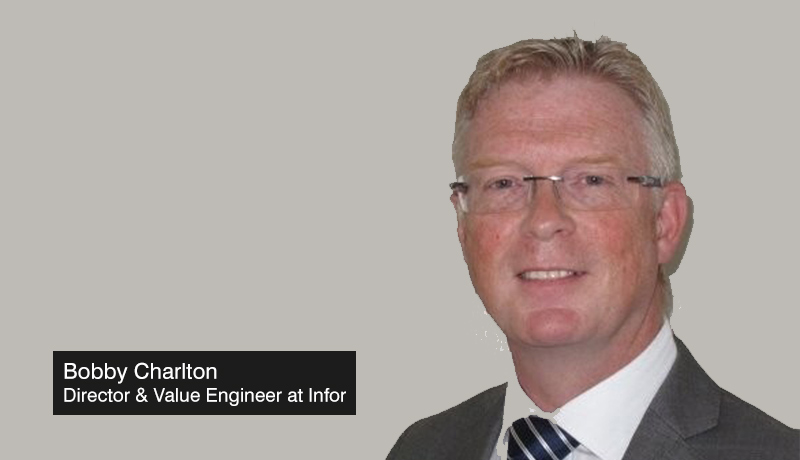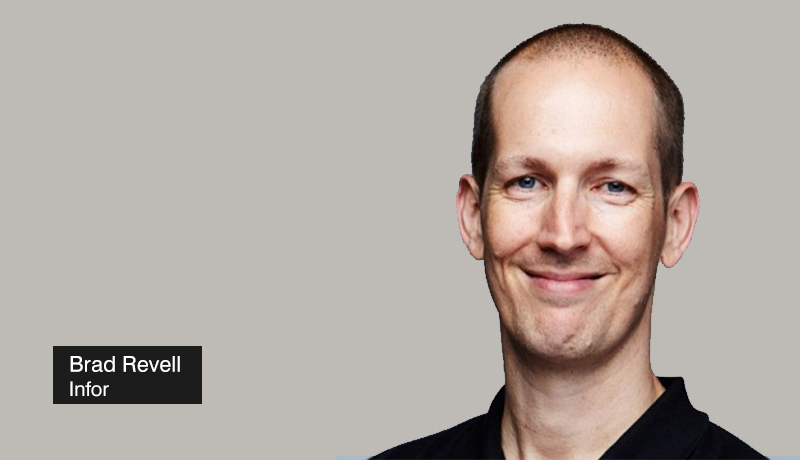
Whether they are a full-scale business transformation, a system overhaul, or a standard upgrade, technology projects throw light on potential inefficiencies and places for development.
However, because projects are often focused on a set of finite objectives, there is often a lot of untapped potentials that lie outside the project’s scope.
It is undeniably a massive task to uncover and address these inefficiencies. Companies frequently don’t know what they don’t know, and focusing on specific problems or places in need of development can lead to a blind spot where you can’t see the forest for the trees.
Brad Revell and Bobby Charlton, lead consultants in Infor’s Digital Strategy & Value Engineering teams, discuss their five top ideas for unlocking some of this potential, as well as the best way to maximise value in every organization.

While the IT director or department head drives many initiatives, an organization-wide deep dive and analysis require access to the C-Suite in order to acquire a complete picture of all aspects of the business. Not only may greater challenges be identified as a result of this, but department and process interdependencies and the perceived value of improvements can also be completely mapped and contextualized.
Choosing the correct methodology is critical when starting a design workshop. Structured dialogues and a clear, established, step-by-step approach to workshops with built-in feedback mechanisms are critical to capturing and processing accurate, in-depth insights in a form that can be processed.
Value engineering uses similar ideas to get the most out of a process, and the best manufacturing projects often use Six Sigma or Lean approaches. It is critical to have pre-set questions asked in a specific order, with signposts to explore further fields when appropriate, to ensure that nothing is overlooked and that each executive’s knowledge is thoroughly captured.
Facilitation abilities are essential for forming a relationship, gaining confidence and trust, and eventually obtaining the most accurate information from an organization. The very best information can be collected, which inevitably leads to the best outcomes, using a combination of knowledge from similar projects and emotional intelligence to pick up on indications that might stimulate the proper questions and lead to higher quality dialogues.
It goes without saying that no stone should be left unturned when investigating an organization’s possible inefficiencies and prospects for growth.
The value must be defined in all of its forms from the beginning, including operational and capital expenditure and skills and resource maximization, decision-making, reporting, and general goodwill and motivation.
The design workshop might examine ten process improvements per area in a typical exercise. For example, performance management findings could include scope for advanced warning of bottlenecks and increased control over lead times, as well as transportation cost visibility and expedited freight. Improved margin analysis, looking at the management of ingredient, ingredient attribute, labor, and equipment utilization, while supply chain findings could include scope for advanced warning of bottlenecks and increased control over lead times and transportation cost visibility and expedited freight.
A good design thinking workshop will help you grasp these issues and replicate a similar approach across the board, from finance to people management. Even the tiniest changes in a specific area, scaled across the organisation, can translate to large sums of value by navigating the multiple layers and getting to the root of the far-reaching difficulties an organisation truly faces.
When it comes to eliminating inefficiencies and increasing value, there is no such thing as a typical company, yet there are a number of pain points and areas with untapped potential that is shared by many. A strategy and outcome exercise conducted in collaboration with a food and beverage company, for example, could reasonably identify potential in maintenance, spanning a variety of processes ranging from increased overall equipment effectiveness (OEE) and reduced contamination risk to extended asset lifetime and lower energy costs, while quality could focus on bi-directional ingredient source and usage traceability and faster, more targeted recalls, as per the diagram below.
While the task may appear insurmountable and far from simple, it is possible to apply transformative insights to project briefs, map them against best-in-class software solutions, and use them to drive enormous scope for improvement across the organization by drawing on experience, adopting the right approach, with the right people, and in a clear structured manner.